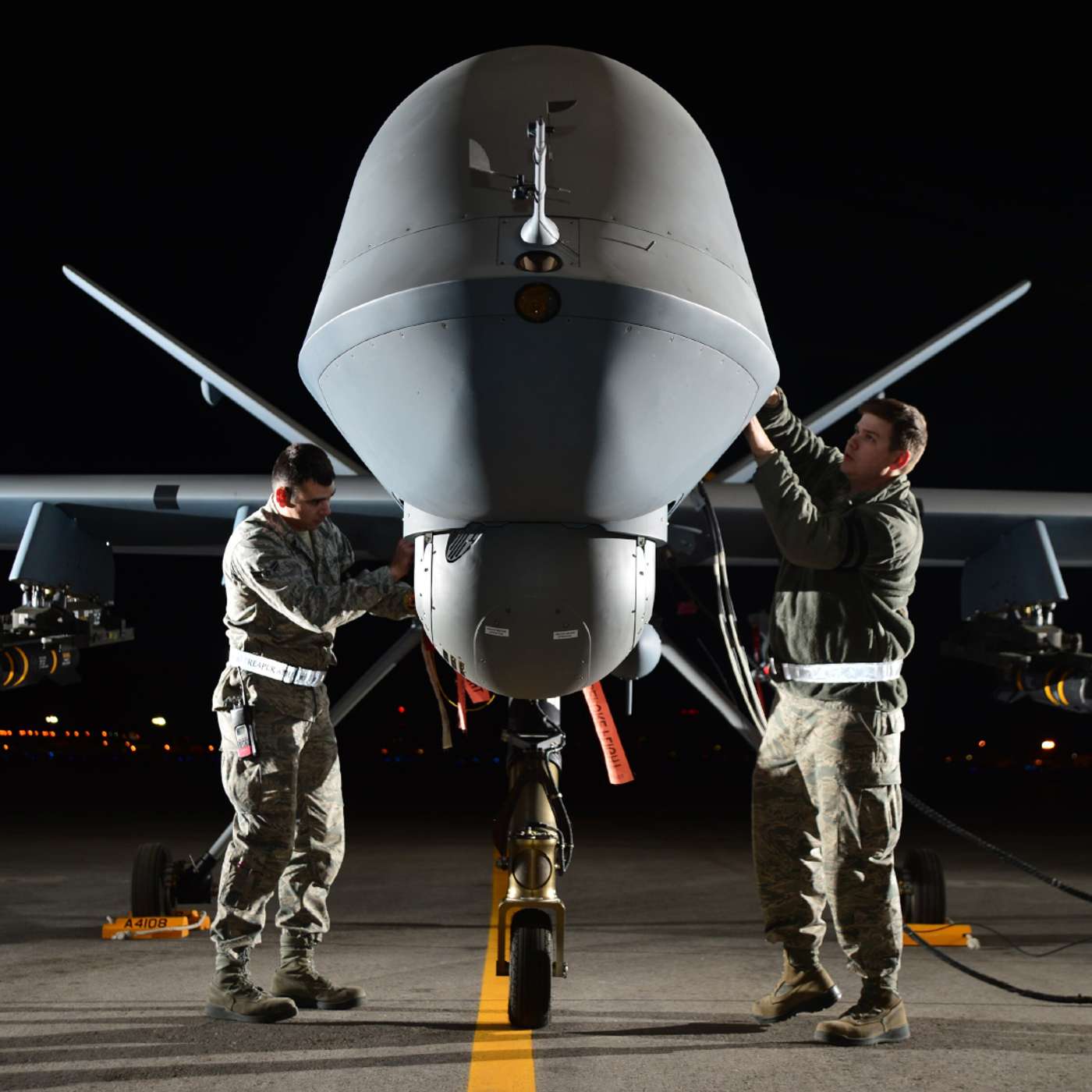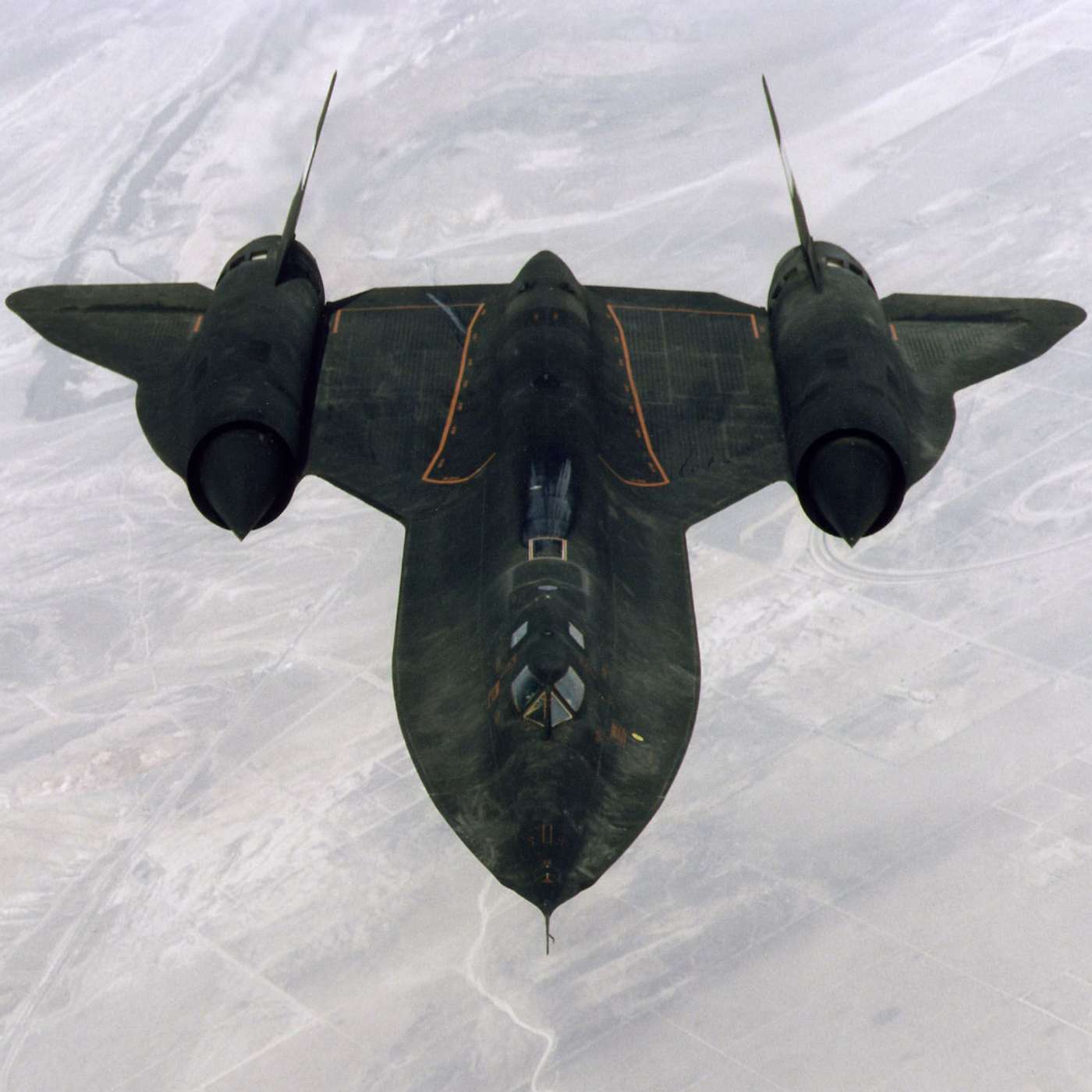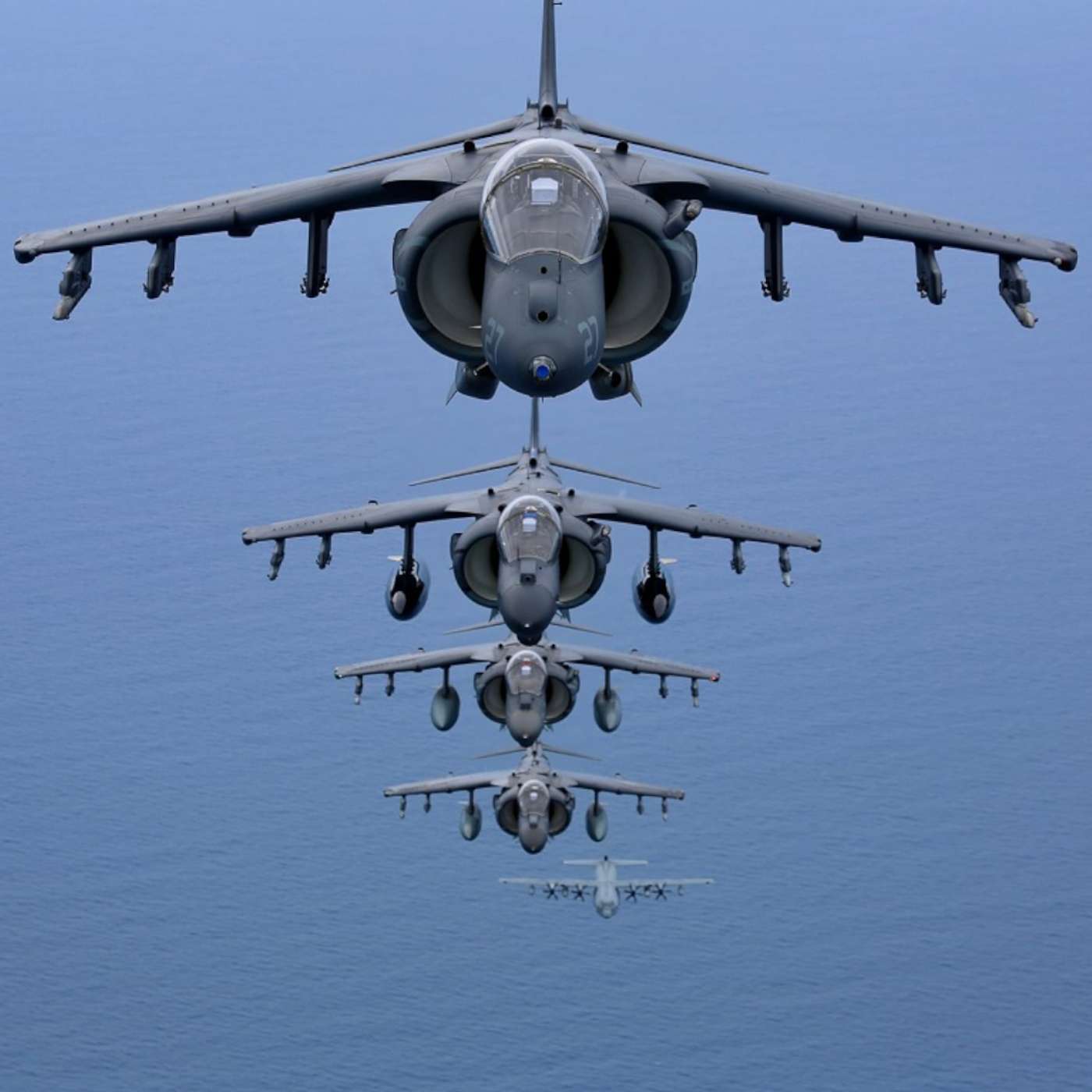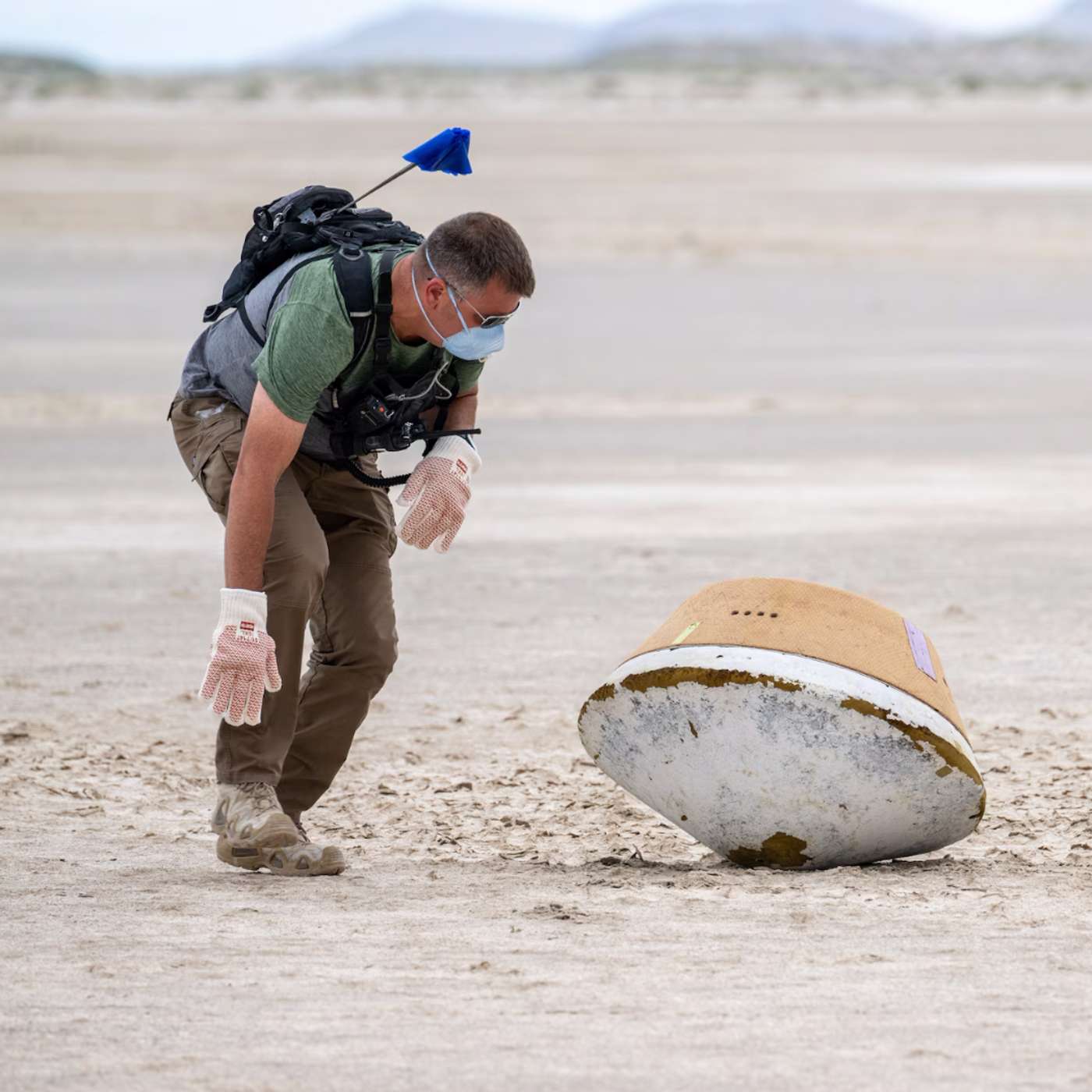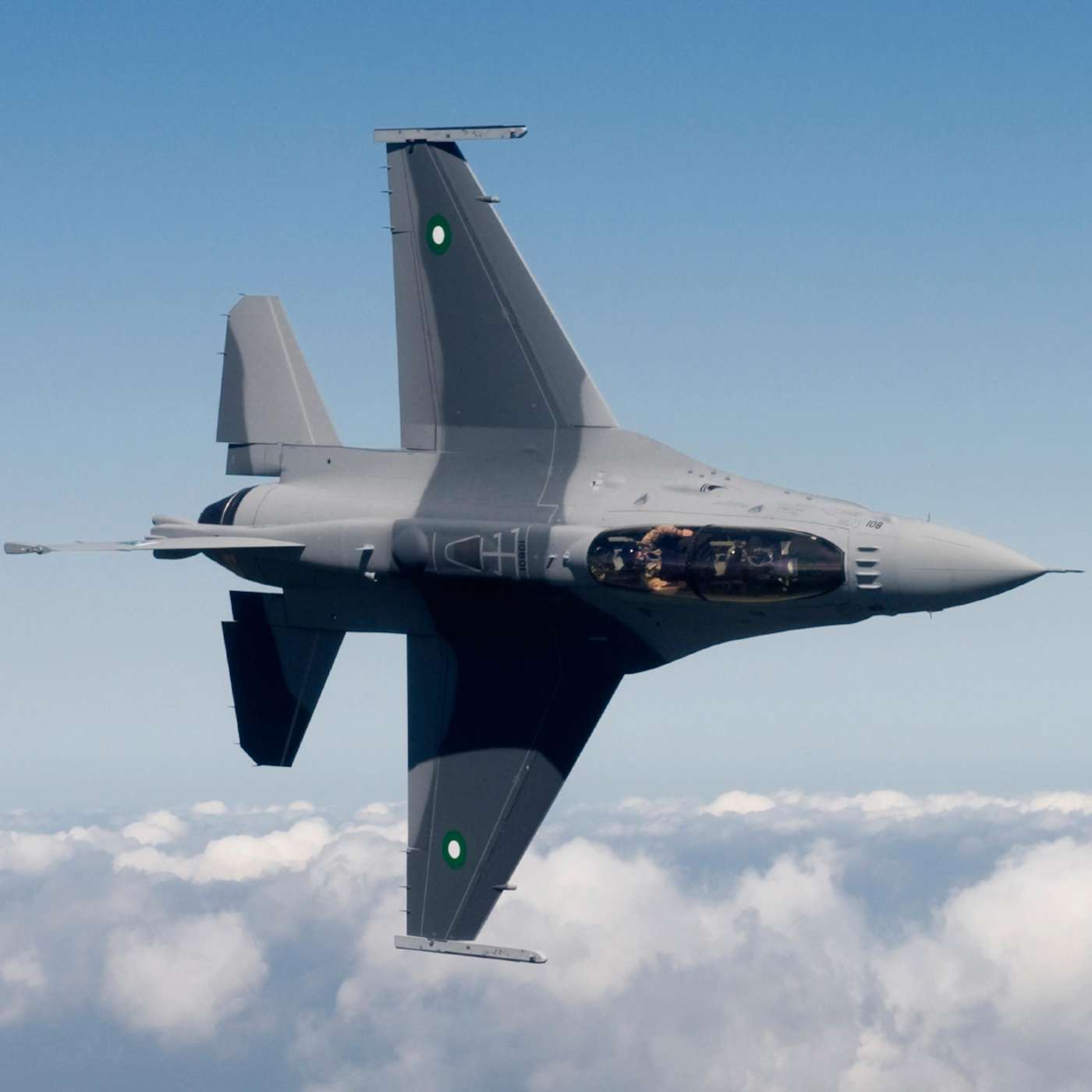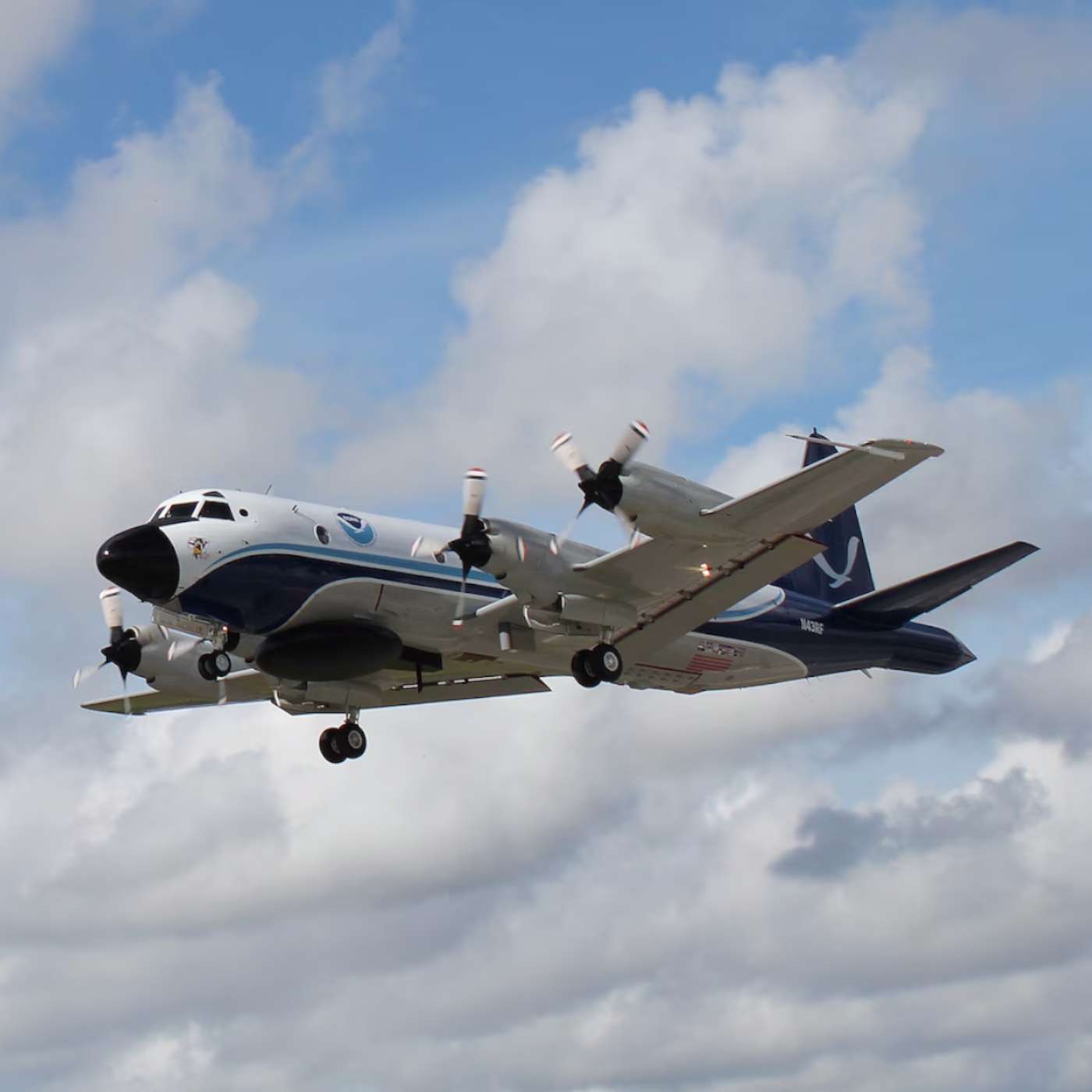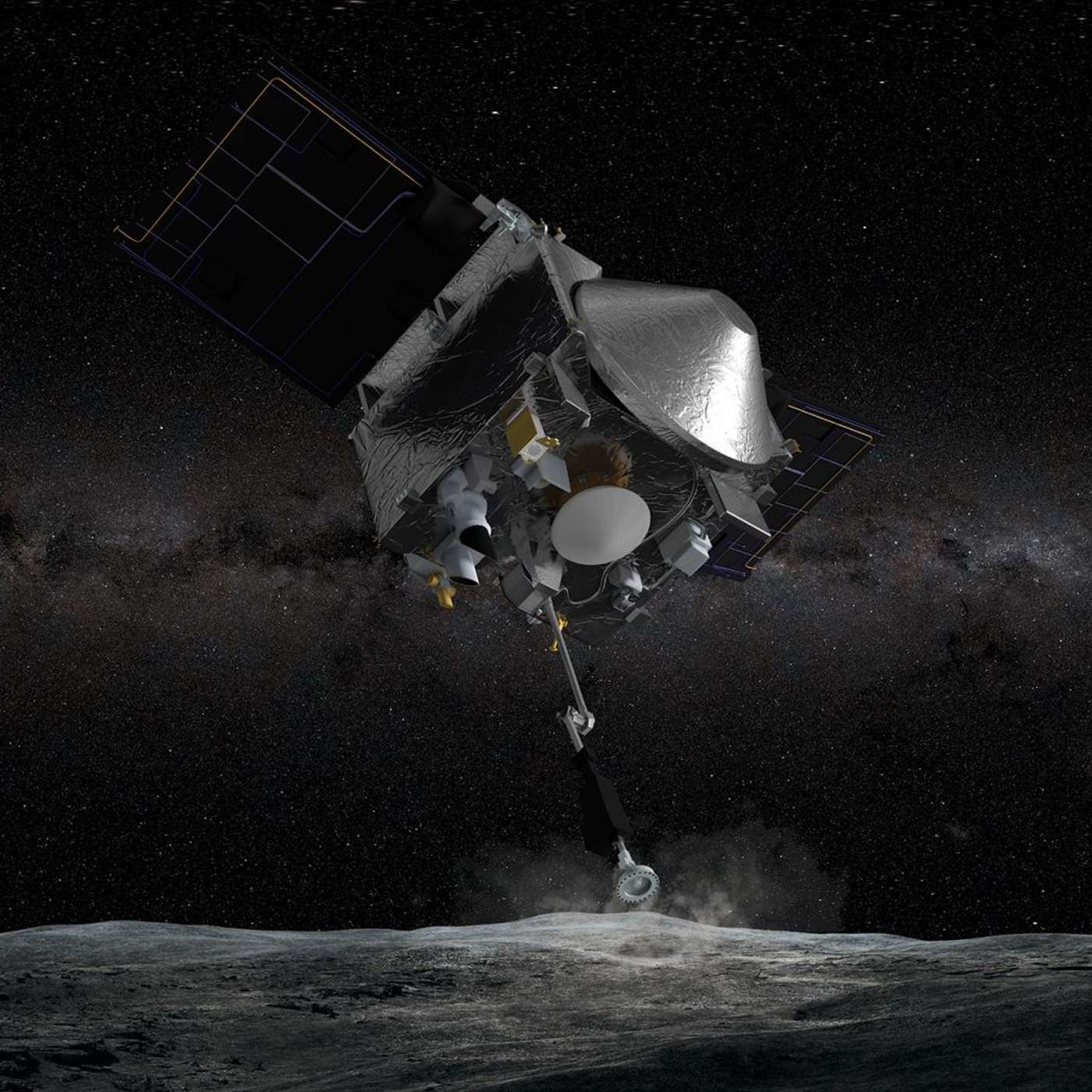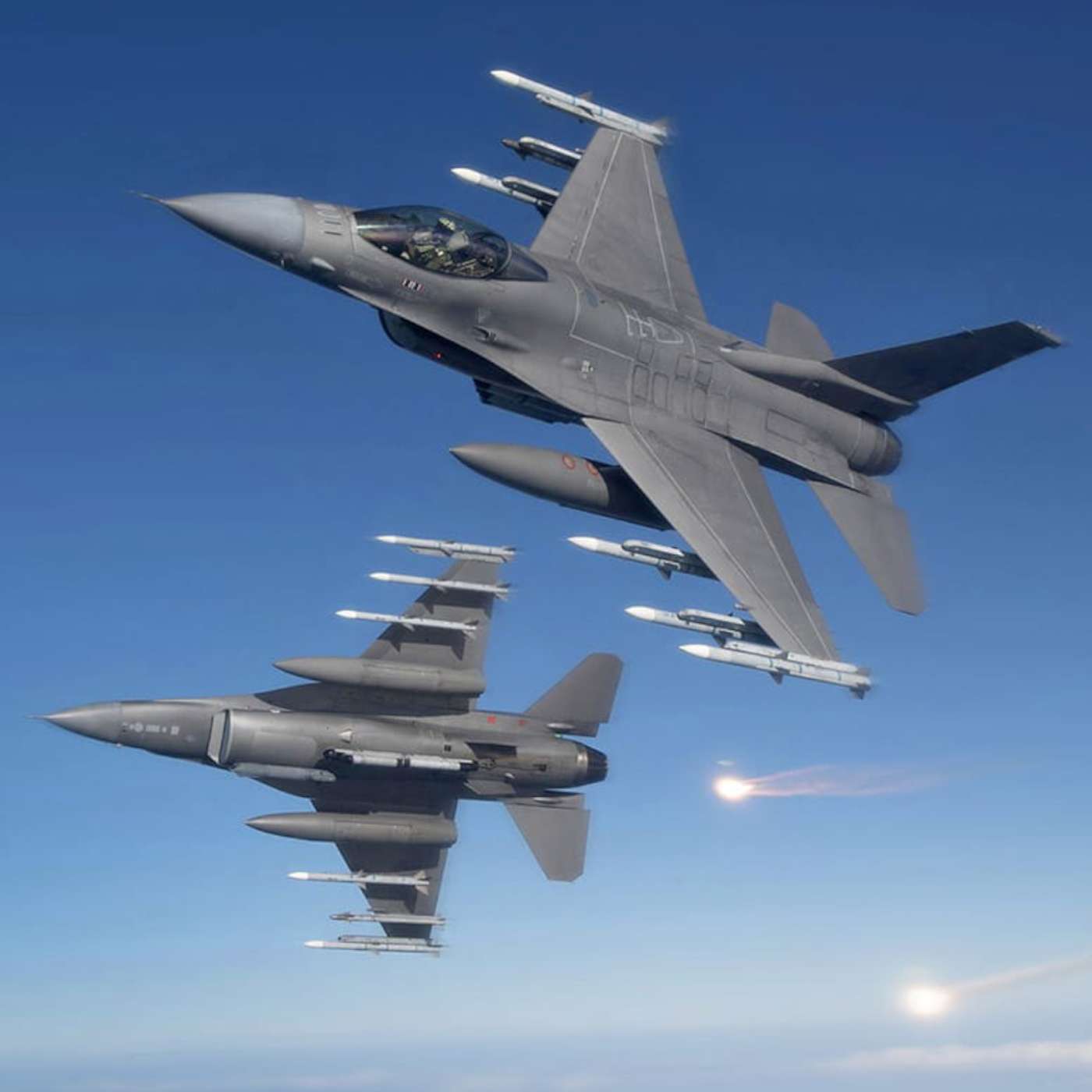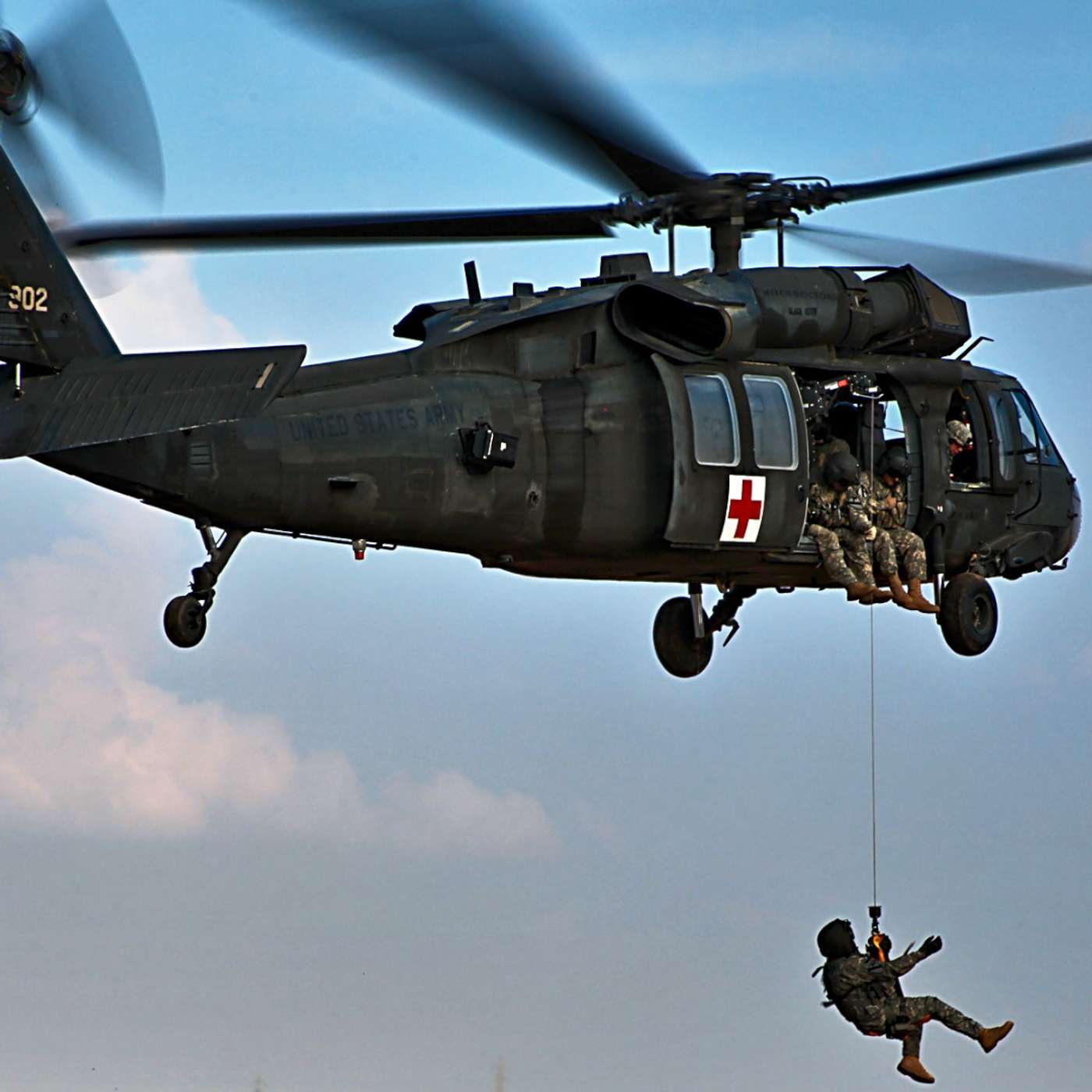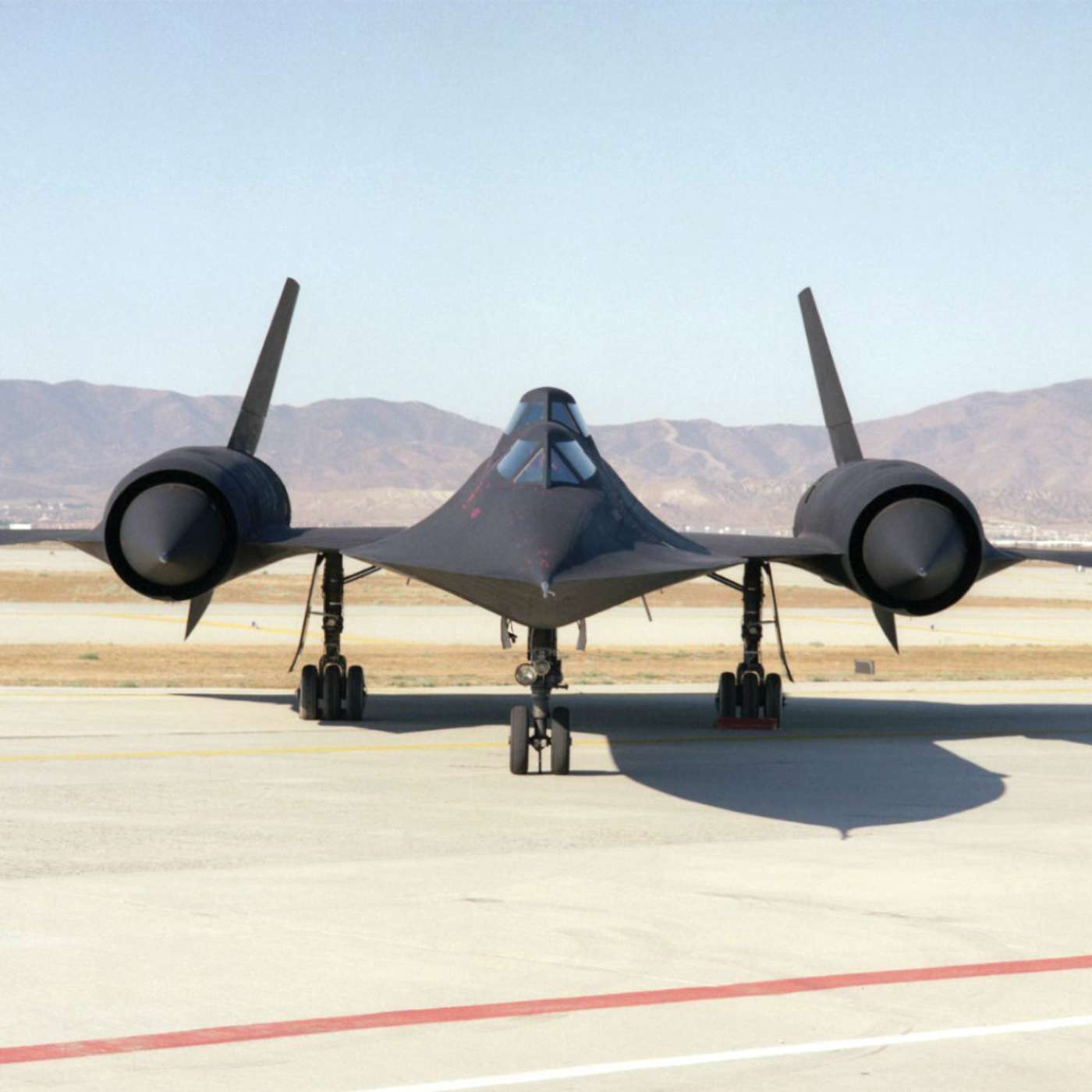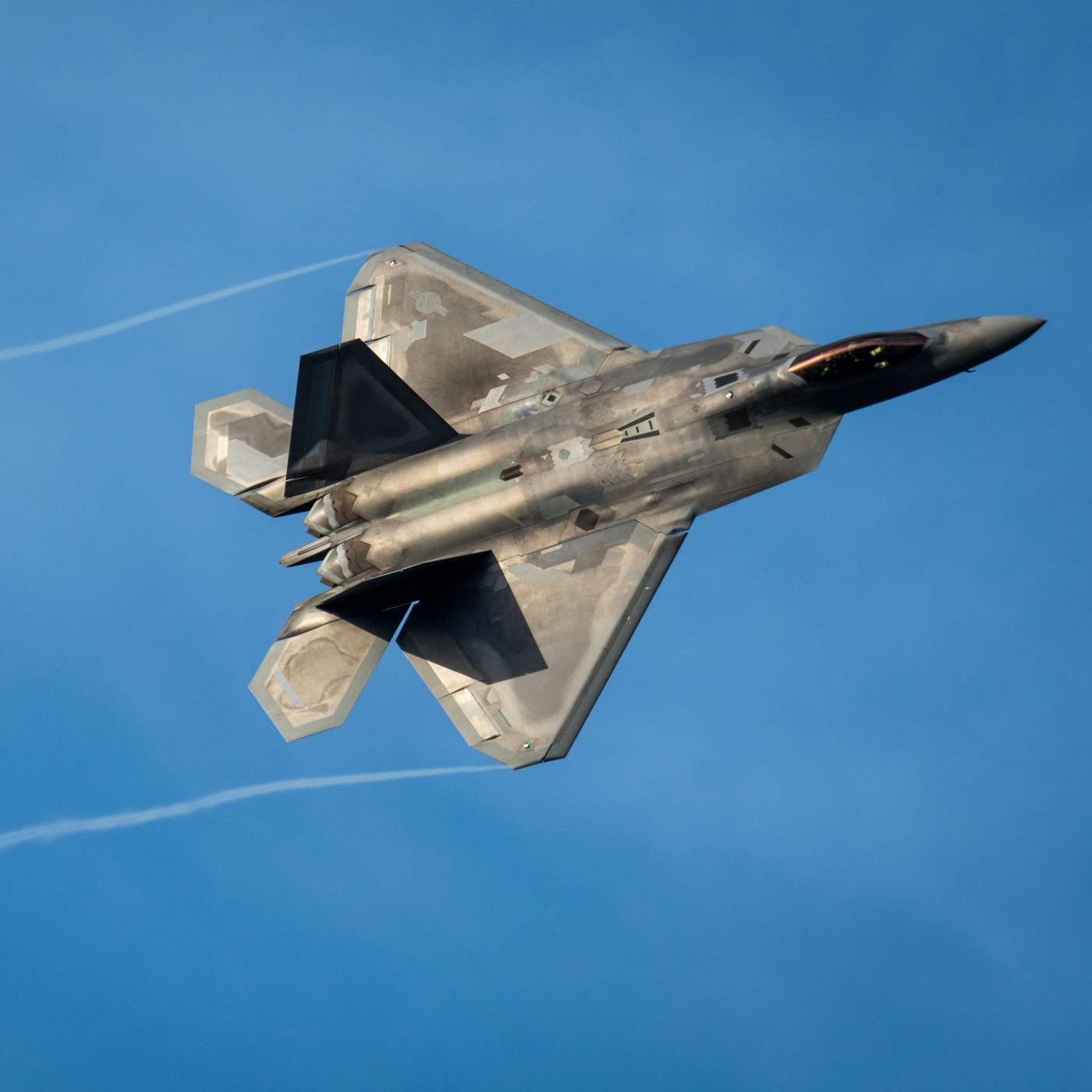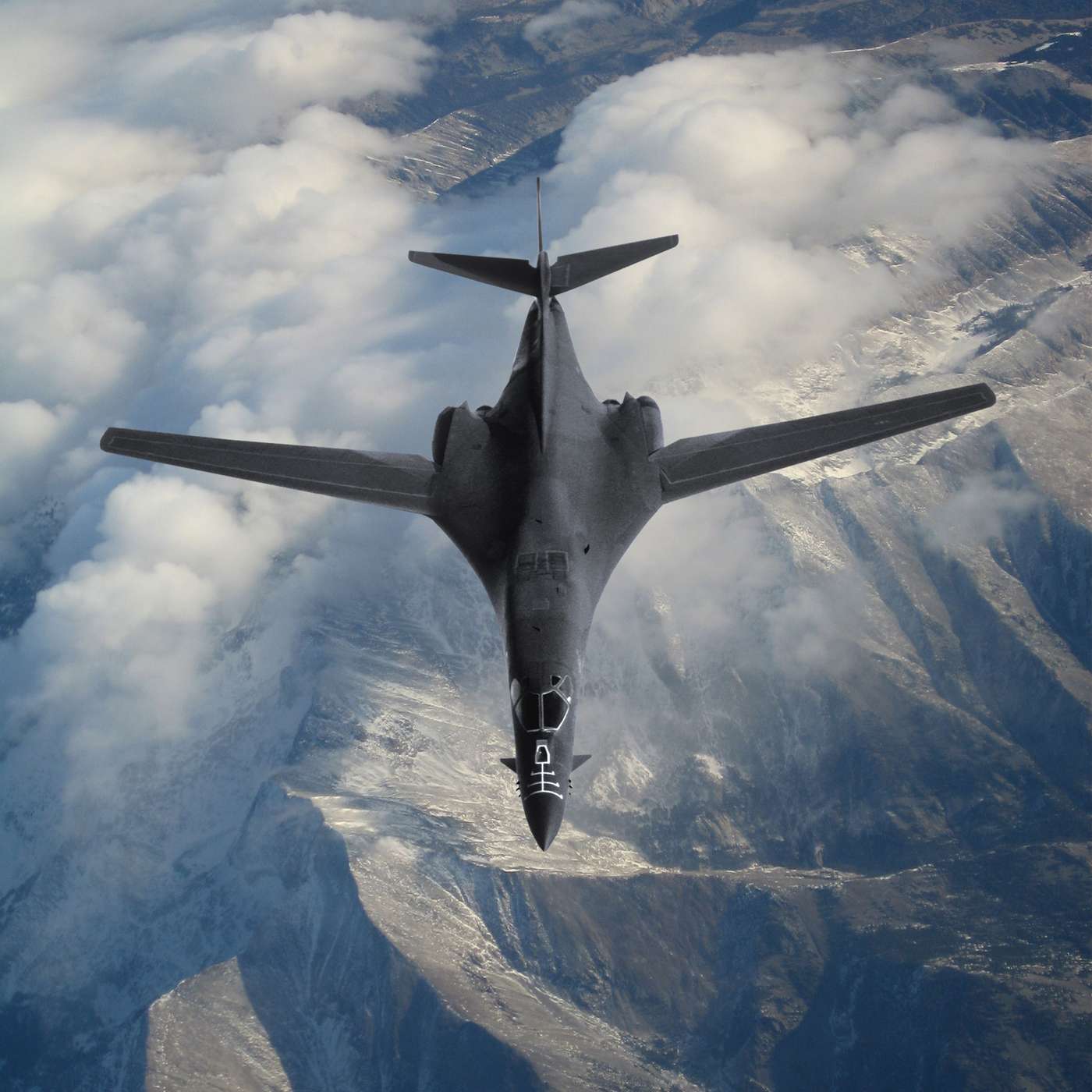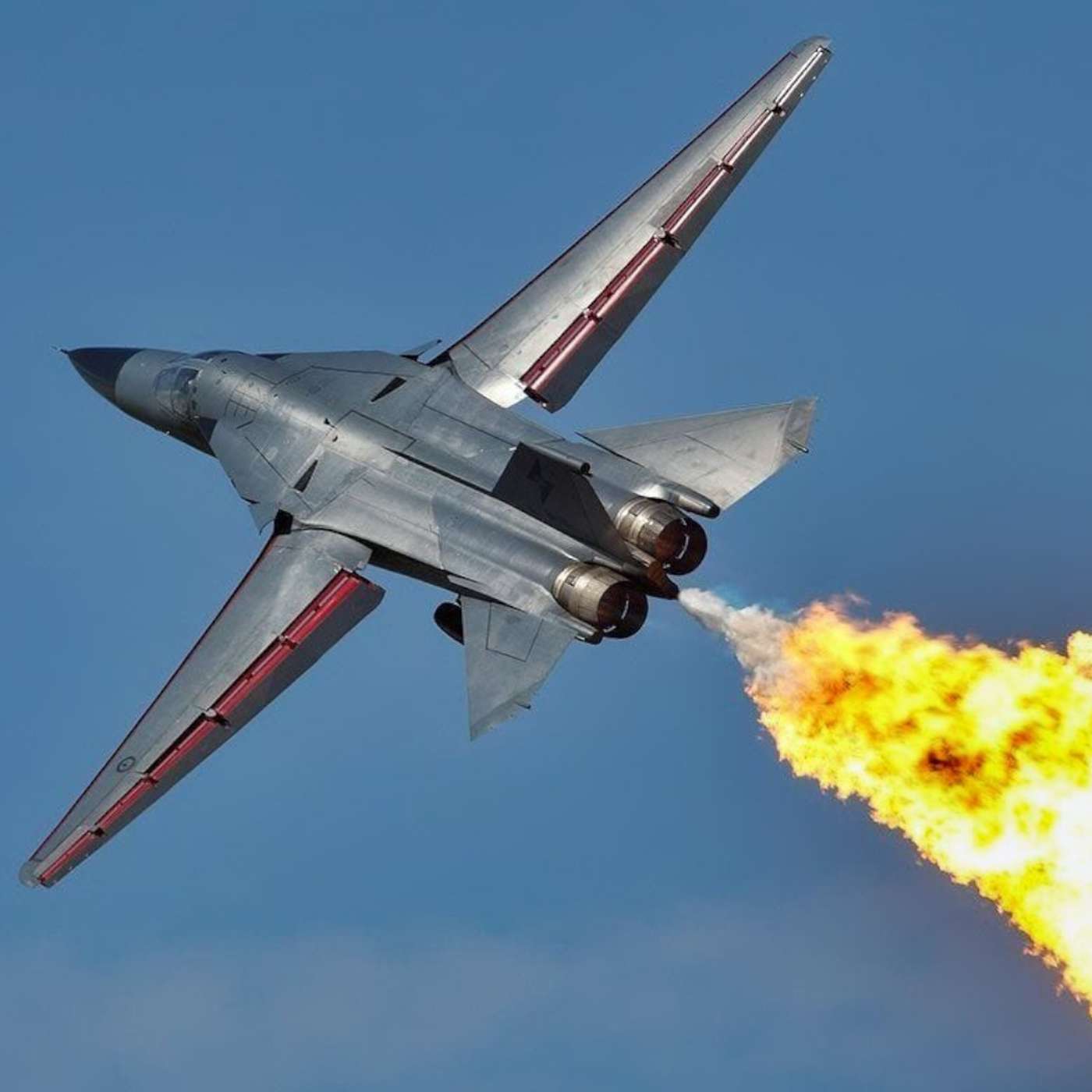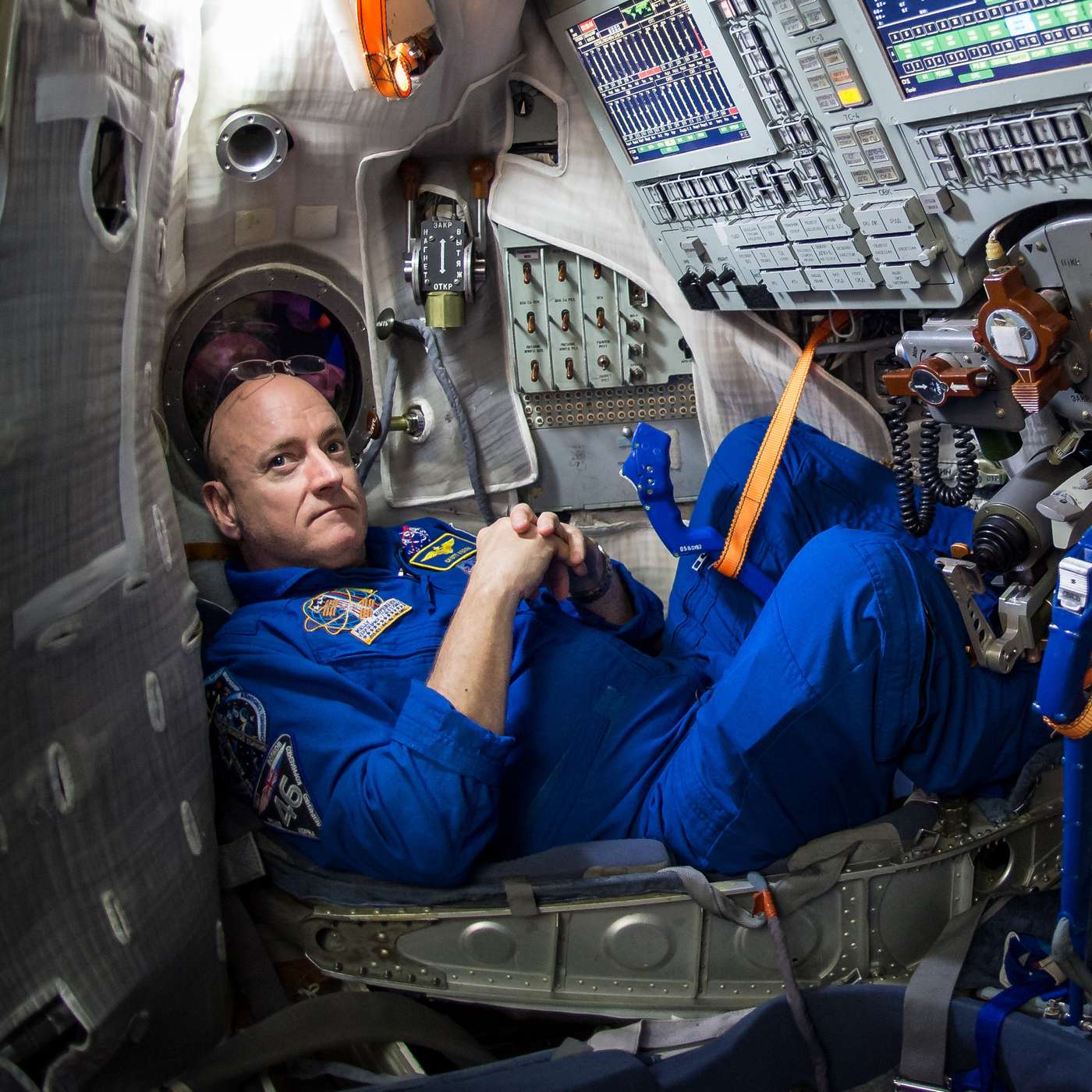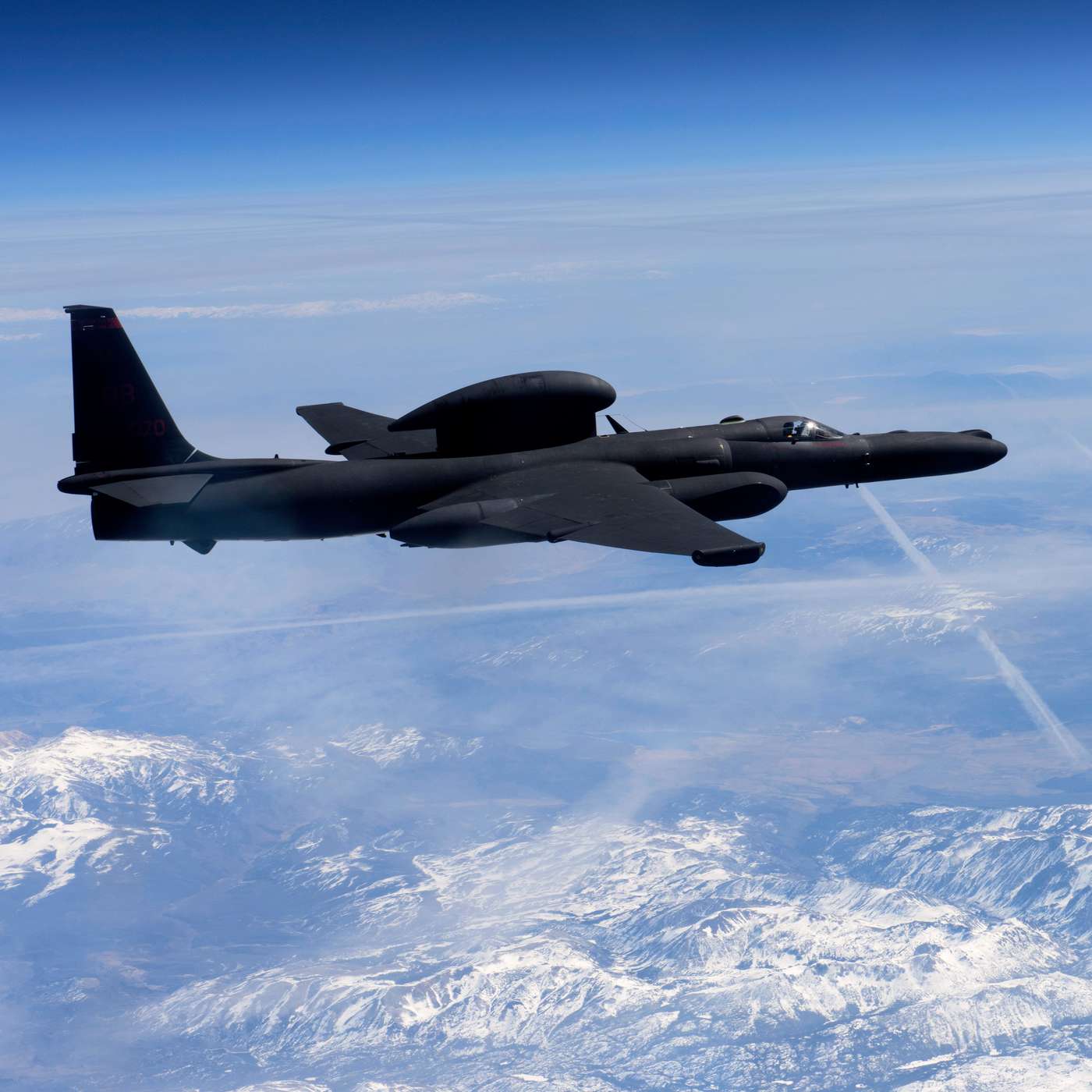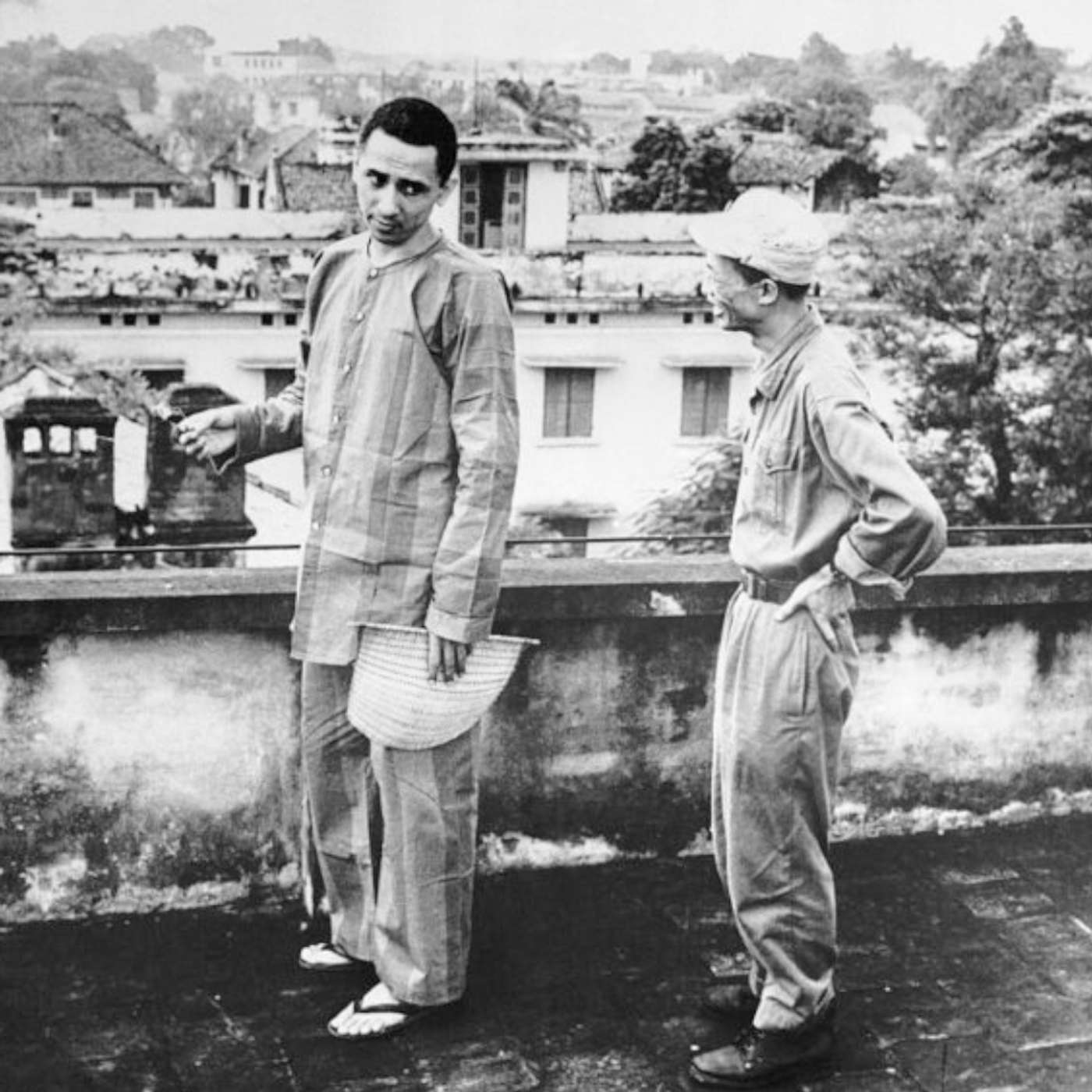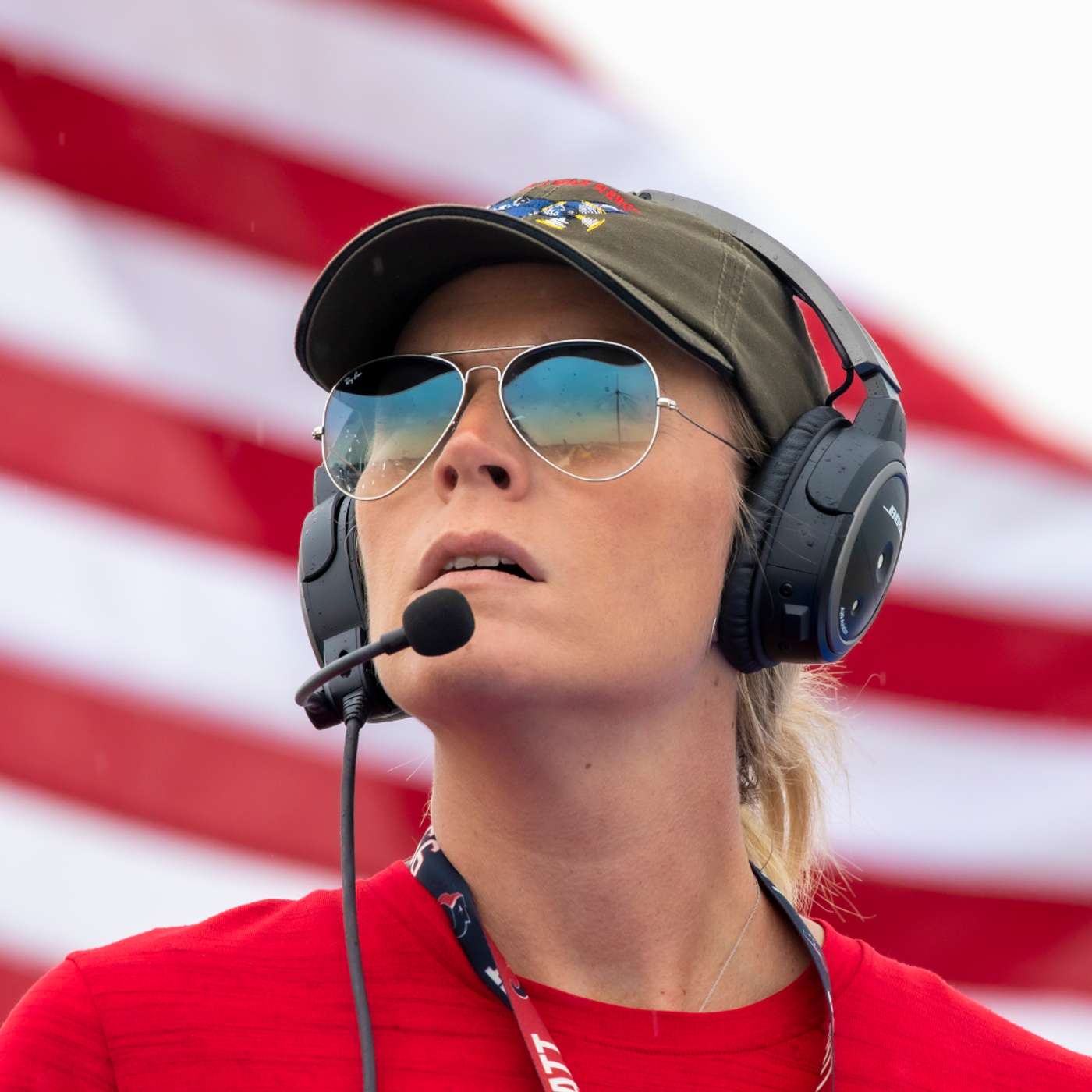Discover Behind the Wings
Behind the Wings

Behind the Wings
Author: Wings Over the Rockies Air & Space Museum™
Subscribed: 59Played: 1,091Subscribe
Share
© 2025 Wings Over the Rockies Air & Space Museum. All Rights Reserved.
Description
Wings Over the Rockies Air & Space Museum has a podcast! Based on our hit YouTube and PBS series of the same name, the Behind the Wings podcast will cover everything from aviation history to the future of space exploration with thought leaders and experts in the industry. This one's going to be cool!
83 Episodes
Reverse
Retired Fighter Pilot Lt. Col. Tammy Barlette shares how flying the A-10 prepared her for operating UAVs like the MQ-1.In this episode, she discusses the Warthog's capabilities, combat missions in Iraq and Afghanistan, controlling the Predator and Reaper drones, returning to jets after a spinal injury, and how she now shares lessons from the flight deck as a mental performance trainer. As air superiority continues to shift from cockpits to control rooms, we get an inside look at why the pilot's role is more complex than ever before. This one is going to be cool!Resources:Athena’s Voice (Tammy's Speaking Website) Crosscheck Mental Performance (Tammy's Training Website) A-10 Fact Sheet (U.S. Air Force) MQ-1 Fact Sheet (U.S. Air Force) MQ-9 Fact Sheet (U.S. Air Force) Chapters:(00:00) - Intro
(01:21) - Balancing Perfectionism
(02:26) - Aviation Beginnings
(03:44) - Tammy's Pilot Journey
(05:15) - Flying the T-37
(06:53) - Selecting the Warthog
(08:22) - From ROTC to the Cockpit
(09:26) - Flying the Thunderbolt II
(10:13) - Favorite Stories
(12:17) - A-10 Capabilities
(13:28) - Close Air Support Training
(14:18) - Transitioning to UAVs
(15:59) - Flying the Predator
(17:58) - MQ-1 Capabilities
(19:09) - Separating Missions and Personal Life
(20:15) - Combat in Iraq and Afghanistan
(22:24) - Weapons School and the MQ-9
(26:03) - Changing Policies
(26:59) - From Jets to Drones to Jets Again
(27:54) - Flying Mistakes
(29:52) - Aircraft Performances
(30:36) - The Future of Uncrewed Aircraft
(31:22) - Mental Performance Training
(35:50) - Tammy's Advice
(36:45) - Outro
Retired Test Pilot Rogers E. Smith recalls flying the final SR-71 Blackbird flight and how a fuel leak grounded the aircraft forever.In this episode, we discuss his Canadian and American military careers, flying experimental aircraft for NASA, and piloting a MiG-25 at 80,000 feet in Russia. From first to fourth-generation fighters, Rogers has flown nearly every U.S. jet and then some, all without ever attending a formal test pilot school. This one is going to be cool!Resources:Rogers' Website Rogers Smith's Bio (Canada's Aviation Hall of Fame) Rogers' SR-71 Career Synopsis (NASA) SR-71 Fact Sheet (National Museum of the US Air Force) Bell X-22 (Wikipedia) X-29 Advanced Technology Demonstrator Aircraft (NASA) Chapters:(00:00) - Intro
(01:20) - Aviation Beginnings
(02:47) - Flying the F-86
(04:32) - From First to Fourth Generation Fighters
(05:06) - How Jet Capabilities Evolved
(08:58) - Becoming a Test Pilot
(09:56) - Favorite Airplane
(11:04) - The Bell X-22
(12:34) - The Grumman X-29
(15:16) - Joining NASA
(18:37) - Flying at 85,000 Feet
(22:16) - The Cockpit View
(23:40) - SR-71 Research and Testing
(27:44) - The Last Blackbird Flight
(29:40) - The Russian‑American Flight Exchange
(36:52) - Flying the MiG-25
(37:34) - Rogers' Advice
(40:32) - Outro
Retired AV-8B Pilots Capt. Frank “Pugs” Smith and Lt. Col. Luke “Warren” Jacobs take us behind the iconic Jump Jet and its 40-year legacy.We are back with our regularly scheduled podcast! In this episode, they discuss carrier operations, vertical takeoff and landing, the challenges of maintaining the aircraft, and how the fighter performed its missions. The Harrier remains one of aviation’s boldest experiments, paving the way for newer V/STOL platforms like the F-35B. This one is going to be cool!Resources:The Harrier Jump Jet (Key Aero)Operation Desert Storm (Air Force Historical Support Division)The AV-8B Harrier II (Wikipedia)Retiring Wings Over the Rockies' Harrier (YouTube)Chapters:(00:00) - Intro
(01:36) - Harrier Overview
(02:35) - Aviation Beginnings
(04:27) - The Jump Jet's 40-Year Journey
(05:28) - Like Flying a Dragon
(06:25) - The TAV-8 Trainer
(07:01) - Flying the Harrier
(08:18) - The A-4 Vs. The AV-8B
(09:19) - Carrier Operations
(10:36) - The V/STOL
(14:47) - Vertical Take Off Challenges
(17:10) - Dogfight Maneuvers
(18:15) - How Loud Was the Jump Jet?
(20:04) - Life Below Deck
(21:05) - Operation Desert Storm
(23:25) - Afghanistan Combat Missions
(25:53) - How Harrier Capabilities Evolved
(26:54) - Flying in Mixed Packages
(28:09) - The AV-8B's Legacy
(30:00) - Frank and Luke's Advice
(32:35) - Outro
How OSIRIS-REx's journey to Asteroid Bennu could reveal clues to the origins of life on Earth. Welcome to the finale of our 4-part bonus podcast miniseries on the making of Behind the Wings PBS Season 7!In this episode, Director Cray Novick and Host Tracy LaTourrette share stories from filming around the U.S. to learn more about OSIRIS-REx's journey to Asteroid Bennu. Join us as we discuss how meteorites helped launch the O-REx idea, designing the spacecraft, touring the asteroid testing wall, and solving problems millions of miles from Earth. This one is going to be cool!Check out the full-length video on PBS or our YouTube channel on November 27. We can't wait to show you what we've been working on!As we conclude our miniseries, our regular podcast returns on November 24 with a conversation about the Harrier aircraft. Tune in to hear inside stories on flying the Jump Jet and its hovering ability!Full Season Premiere Schedule:PBS:Episode 1 – The Hurricane Hunters: November 6, 2025, 7:00 p.m. MTEpisode 2 – Building the International Space Station: November 6, 2025, 7:30 p.m. MTEpisode 3 – 50 Years of the F-16: November 13, 2025, 7:00 p.m. MTEpisode 4 – Unlocking Asteroid Secrets: November 13, 2025, 7:30 p.m. MTWings’ YouTube Channel:Episode 1 – The Hurricane Hunters: November 6, 2025, 7:00 p.m. MTEpisode 2 – Building the International Space Station: November 13, 2025, 7:00 p.m. MTEpisode 3 – 50 Years of the F-16: November 20, 2025, 7:30 p.m. MTEpisode 4 – Unlocking Asteroid Secrets: November 27, 2025, 7:30 p.m. MTChapters:(00:00) - Intro
(00:27) - OSIRIS-REx Overview
(01:28) - A 20-Year Mission
(03:23) - The Antarctic Asteroid Team
(04:53) - Why Bennu?
(05:52) - The TAG System
(07:50) - The Backup Plan
(09:20) - Landing Site
(09:53) - Collecting the First Samples
(10:50) - Bringing Material Back to Earth
(13:14) - Bennu Tea
(13:52) - The Next Generation's Research
(14:12) - OSIRIS-REx's Future
(14:55) - Outro
How the F-16 became a combat legend around the world, and what it takes to build them.Welcome to Part 3 of our 4-part bonus podcast miniseries on the making of Behind the Wings PBS Season 7!In this episode, Director Cray Novick and Host Tracy LaTourrette share stories from filming around the U.S. to learn more about the history behind the Fighting Falcon. Join us as we discuss the dangerous first flight, touring the only manufacturing plant, technical upgrades, and test-flying the Viper fresh off the production line. This one is going to be cool!Check out the full-length video on PBS or our YouTube channel. We can't wait to show you what we've been working on!Full Season Premiere Schedule:PBS:Episode 1 – The Hurricane Hunters: November 6, 2025, 7:00 p.m. MTEpisode 2 – Building the International Space Station: November 6, 2025, 7:30 p.m. MTEpisode 3 – 50 Years of the F-16: November 13, 2025, 7:00 p.m. MTEpisode 4 – Unlocking Asteroid Secrets: November 13, 2025, 7:30 p.m. MTWings’ YouTube Channel:Episode 1 – The Hurricane Hunters: November 6, 2025, 7:00 p.m. MTEpisode 2 – Building the International Space Station: November 13, 2025, 7:00 p.m. MTEpisode 3 – 50 Years of the F-16: November 20, 2025, 7:30 p.m. MTEpisode 4 – Unlocking Asteroid Secrets: November 27, 2025, 7:30 p.m. MTChapters:(00:00) - Intro
(00:35) - Tracy's F-16 Background
(02:28) - Why We Chose the Viper
(03:37) - Aircraft Maintenance and Improvements
(04:47) - The Last Manufacturing Plant
(06:48) - Touring the Production Line
(08:51) - Test Flying Fighting Falcons
(09:47) - The Aircraft Design
(13:22) - The Dangerous First Flight
(14:17) - F-16 Legacy
(16:32) - Outro
How the world's largest spacecraft taught us to live and work in space.Welcome to Part 2 of our 4-part bonus podcast miniseries on the making of Behind the Wings PBS Season 7! In this episode, Director Cray Novick and Host Tracy LaTourrette share stories from filming around the U.S. to learn more about building the International Space Station. Join us as we discuss astronaut training in the enormous Neutral Buoyancy Lab pool, assembling the ISS in orbit, life on board, and how mission control helps solve disasters in real time. This one is going to be cool!Check out the full-length video on PBS or our YouTube channel. We can't wait to show you what we've been working on!Full Season Premiere Schedule:PBS:Episode 1 – The Hurricane Hunters: November 6, 2025, 7:00 p.m. MTEpisode 2 – Building the International Space Station: November 6, 2025, 7:30 p.m. MTEpisode 3 – 50 Years of the F-16: November 13, 2025, 7:00 p.m. MTEpisode 4 – Unlocking Asteroid Secrets: November 13, 2025, 7:30 p.m. MTWings’ YouTube Channel:Episode 1 – The Hurricane Hunters: November 6, 2025, 7:00 p.m. MTEpisode 2 – Building the International Space Station: November 13, 2025, 7:00 p.m. MTEpisode 3 – 50 Years of the F-16: November 20, 2025, 7:30 p.m. MTEpisode 4 – Unlocking Asteroid Secrets: November 27, 2025, 7:30 p.m. MTChapters:(00:00) - Intro
(00:32) - The Idea Behind Space Stations
(01:11) - Forming International Partnerships
(01:45) - Assembling the ISS
(04:51) - Living Onboard the Station
(05:59) - Mission Control
(07:15) - The Neutral Buoyancy Lab
(10:36) - The Vehicle Mockup Assembly Building
(12:00) - Looking Towards the Future
(12:44) - Retiring the ISS
(13:57) - Outro
What does it take to fly into a hurricane, and why is it important?Welcome to Part 1 of our bonus podcast miniseries on The Making of Behind the Wings PBS Season 7. In this episode, Director Cray Novick and Host Tracy LaTourrette discuss stories they heard while filming The Hurricane Hunters. Join us as we explore the dare that started it all, the modified aircraft and its technology, and how the team saves millions of lives every year. This one is going to be cool!Check out the full-length episode on PBS or our YouTube channel on November 6. We can't wait to show you what we've been working on!Full Season Premiere Schedule:PBS:Episode 1 – The Hurricane Hunters: November 6, 2025, 7:00 p.m. MTEpisode 2 – Building the International Space Station: November 6, 2025, 7:30 p.m. MTEpisode 3 – 50 Years of the F-16: November 13, 2025, 7:00 p.m. MTEpisode 4 – Unlocking Asteroid Secrets: November 13, 2025, 7:30 p.m. MTWings’ YouTube Channel:Episode 1 – The Hurricane Hunters: November 6, 2025, 7:00 p.m. MTEpisode 2 – Building the International Space Station: November 13, 2025, 7:00 p.m. MTEpisode 3 – 50 Years of the F-16: November 20, 2025, 7:30 p.m. MTEpisode 4 – Unlocking Asteroid Secrets: November 27, 2025, 7:30 p.m. MTChapters:(00:00) - Intro
(00:56) - Why Pick This Topic?
(02:01) - The Hurricane Hunters' Origin Story
(03:11) - A Personal Story
(04:20) - The Flight Crew
(06:27) - Why Fly Into a Hurricane?
(07:57) - How the Information Is Used
(08:53) - The Aircraft
(09:54) - The Pilot's Perspective
(10:25) - The Equipment
(11:14) - The Flight Brief
(12:25) - Why Propellers Are Better than Engines
(13:20) - The Missions
(14:16) - The Future
(15:10) - Advice
(16:16) - Outro
University of Arizona Professor and OSIRIS-REx Principal Investigator Dr. Dante Lauretta explains how asteroids could reveal the origins of life on Earth.In this episode, we celebrate the fifth anniversary of the asteroid sample collection on October 20 and explore the spacecraft’s design, the daring Touch-And-Go maneuver, challenges the team overcame, and what we’ve learned so far from the materials returned from Asteroid Bennu. Our knowledge of space is rapidly evolving, and we still have so much more to learn.This special release features the full-length conversation with Dante from our upcoming Season 7 of Behind the Wings on PBS. To dive deeper into the OSIRIS-REx mission, watch the video premiere on November 27 on our YouTube page. This one is going to be cool!The regular podcast will take a short mid-season break and return on November 24. In the meantime, check out our upcoming weekly mini-series: The Making of Behind the Wings PBS Season 7! Resources:Dante's Bio (University of Arizona) Asteroid Bennu (NASA) Asteroid Apophis (NASA) OSIRIS-REx Mission (NASA) OSIRIS-APEX (NASA)Chapters:(00:00) - Intro
(02:43) - Aerospace Beginnings
(06:07) - Antarctic Collection Mission
(09:36) - Why Go to an Asteroid?
(11:57) - Designing OSIRIS-REx
(14:16) - Earning NASA Funding
(17:33) - Michael Drake's Passing
(21:53) - The Challenge of Microgravity
(24:35) - Testing the Spacecraft
(26:51) - Launch Day
(30:26) - Why was Asteroid Bennu Chosen?
(31:47) - First Images
(33:33) - Unexpected Obstacles when Landing
(36:35) - The Touch-And-Go System
(45:51) - Returning O-REx to Earth
(52:06) - Removing the Samples
(53:46) - Space Rock Testing
(55:17) - What Have We Learned so Far?
(57:48) - Are We Alone in the Universe?
(59:51) - Future Missions
(01:01:48) - Dante's Advice
(01:03:06) - Outro
We're excited to announce our special four-part podcast miniseries featuring stories from the making of our newest Behind the Wings PBS season! Director Cray Novick and Host Tracy "Jackie'O" LaTourrette discuss our upcoming episodes: "The Hurricane Hunters," "Building the International Space Station," "50 Years of the F-16," and "Unlocking Asteroid Secrets." Join us to hear inside tales you won't find anywhere else. This is going to be cool!Miniseries episodes come out every Thursday starting October 23. Also, check out the new season on PBS or at our YouTube channel beginning November 6. We can't wait to show you what we've been working on!Our regular podcast episodes will take a mid-season break after Episode 63 and return on November 24.Full Season Premiere Schedule:PBS:Episode 1 – The Hurricane Hunters: November 6, 2025, 7:00 p.m. MTEpisode 2 – Building the International Space Station: November 6, 2025, 7:30 p.m. MTEpisode 3 – 50 Years of the F-16: November 13, 2025, 7:00 p.m. MTEpisode 4 – Unlocking Asteroid Secrets: November 13, 2025, 7:30 p.m. MTWings’ YouTube Channel:Episode 1 – The Hurricane Hunters: November 6, 2025, 7:00 p.m. MTEpisode 2 – Building the International Space Station: November 13, 2025, 7:00 p.m. MTEpisode 3 – 50 Years of the F-16: November 20, 2025, 7:30 p.m. MTEpisode 4 – Unlocking Asteroid Secrets: November 27, 2025, 7:30 p.m. MT
Theoretical Physicist Andrew Strominger explains what exactly black holes are and how they could tell us about the beginning of the cosmos.In this episode, Andrew discusses the questions behind black holes, the strange physics at their event horizon, what they reveal about the nature of space and time, and how he, Stephen Hawking, and Malcolm Perry helped develop the theory that "soft hairs" may store information on black holes' surface. From leading minds like Einstein, Hawking, and Strominger, our understanding of these celestial bodies is constantly evolving, and we still have so much to learn. This one is going to be cool!Resources:Andrew's Bio (Harvard)The Event Horizon TelescopeHawking team updates soft hair theory to help solve black hole information paradox (Phys.org)What are black holes? (NASA)Einstein’s Theory of General Relativity (Space.com)Chapters:(00:00) - Intro
(01:59) - Andrew's Favorite Theories
(04:11) - Aerospace Beginnings
(05:53) - From Commune to Harvard
(08:24) - What Is a Black Hole?
(12:29) - The Different Types
(14:17) - How They Form
(15:52) - How Far Are They from Earth?
(16:06) - Why Should We Study Black Holes?
(17:38) - Why Doubt Is a Valuable Tool
(19:37) - The Information Paradox
(22:22) - Working Alongside Stephen Hawking
(24:12) - Soft Hairs
(26:29) - The Holographic Principle
(30:31) - Can Black Holes Be Used for Travel?
(31:19) - "Interstellar" Time Dilation
(34:14) - Why Isn't a Black Hole Considered a Vacuum?
(35:02) - The Future of Physics
(36:15) - Andrew's Advice
(37:04) - Outro
Pilot Mike Silva recalls a high-speed chase that ended when his news helicopter stopped a fleeing criminal’s stolen car, allowing police to save a hostage's life.Welcome to Season 7 of the Behind the Wings podcast! In this episode, Mike discusses Huey missions in Vietnam, piloting Copter4 at Denver CBS, returning to combat as the oldest Black Hawk aviator in Iraq, and saving lives during intense missions. From the Fire Base Mary Ann battle to flying alongside dangerous tornadoes, he has done it all in a career spanning more than 50 years. This one is going to be cool!Resources:Wings Museum's Huey The UH-1 Huey (Wikipedia) The UH-60 Black Hawk (Lockheed Martin) The Battle of Fire Base Mary Ann (Wikipedia)1988 Denver Police Chase (YouTube) Chapters:(00:00) - Intro
(01:36) - Which Aircraft Taught You the Most About Flying?
(02:19) - Mike's Favorite Aircraft
(03:17) - Aviation Beginnings
(04:05) - Joining the Army
(05:37) - Flight Training
(07:24) - Going to Vietnam
(08:03) - Lessons Learned From Vietnam
(08:50) - Flying the UH-1
(09:43) - Huey Roles
(10:26) - Fire Base Mary Ann Battle
(14:39) - Returning Home
(15:28) - Working for CBS
(17:02) - Landing on a Bank Robber's Car
(23:14) - Journey to Iraq
(25:18) - Encountering Snipers
(26:10) - Vietnam vs. Iraq
(27:05) - Awards and Honors
(27:54) - Mike's Advice
(29:15) - Outro
The Behind the Wings podcast is back with Season 7 and 10 new episodes! From the mysteries of black holes to the hovering capabilities of the Harrier Jump Jet, and the final flight of the SR-71 Blackbird, we've got some incredible stories and guests lined up!New episodes come out every other Monday, starting next week with Pilot Mike Silva, famously known for landing his news helicopter on a fleeing bank robber's car. Subscribe wherever you listen, because this season is going to be cool.See you next week for Season 7 of Behind the Wings. In the meantime, check out our past episodes!
Retired Fighter Pilot Randy "Laz" Gordon explains how the F-22 changed the air battlefield and why it was built to win the first fight.In this episode, Randy discusses the 70-plus aircraft he has flown, his combat career, test-flying fighter jets, and how artificial intelligence is shaping the future of aviation. We’ll also explore some of the Raptor's surprising similarities to civilian Cessna aircraft, and why, in some ways, the Skyhawk is a harder airplane to manage. From flying a zeppelin to iconic planes like the F-15, "Laz" has done it all. This one is going to be cool!Episode 60 marks the end of Season 6. We will be taking a short break, but are excited to bring you more stories in Season 7, coming this fall. Resources:Special Lecture: F-22 Flight Controls (YouTube) Randy's Bio The F-22 Raptor (Lockheed Martin)Chapters:(00:00) - Intro
(01:35) - Flying 70+ Aircraft
(02:47) - Aviation Beginnings
(06:10) - The USAFA
(09:03) - What Makes a Good Pilot?
(11:29) - Flight Training
(13:18) - The F-15 vs. F-16
(15:59) - Flying the A-10
(17:44) - Combat in Iraq
(21:08) - Flying the F-22
(26:08) - Cessna vs. F-22
(28:11) - Raptor Mindset
(31:11) - Radar-absorbing Material
(32:39) - Stealth Airframe
(35:55) - Supercruise
(39:41) - The Human and the Jet
(42:18) - Test Flying Aircraft
(44:43) - Why the F-15 was Hard to Master
(45:24) - A Dangerous Moment
(48:05) - How AI Will Impact Aviation
(53:34) - F-22 Legacy
(55:13) - Randy's Advice
(57:40) - Outro
Astrophysicist Dr. Jonathan McDowell explains how the ever-growing problem of space junk is threatening satellites, science missions, and even spaceflight as we know it.In this episode, Jonathan discusses orbital debris, anti-satellite missiles, clean-up efforts, and how one incident could cause a communication blackout for decades. In the lawless realm of low Earth orbit, we could see a future where space exploration comes to a halt altogether. However, some companies are testing solutions that aim to alleviate the problem before it's too late. There is a lot to learn!Resources:Jonathan's BioJonathan's Space ReportSpace Debris (NASA)Wild Wild Space Trailer (HBO Max)Chapters:(00:00) - Intro
(01:32) - Space Junk Overview
(05:11) - Small Debris Damage
(07:54) - Aerospace Beginnings
(09:37) - Tracking Launches
(11:39) - Dodging Debris
(15:21) - Anti-Satellite Missiles
(20:36) - Space Air Traffic Control
(23:27) - Safer Altitudes
(24:47) - The End of the ISS
(29:17) - How Space Junk is Blocking Research
(31:52) - Billboards in Space
(33:47) - Satellite Designs
(35:05) - Cleaning Up
(36:07) - Jonathan's Advice
(38:14) - Outro
Retired Pilot Maj. Gen. Garrett “Sack” Harencak and Weapons Systems Officer Lt. Col. Tony “Voodoo” Eret share what it was like to fly together in the Rockwell B-1 Lancer.In this episode, they take us inside the “Bone”, a supersonic, variable-sweep wing bomber originally designed for low-level nuclear strikes and later transformed into a precision conventional strike aircraft. They discuss nuclear alert procedures, low-level mountain missions using terrain-following radar, and a first-hand account of ejecting from the four-person flight deck. This one is going to be cool!Resources:Wings Museum's B-1A LancerThe B-1 Lancer (Behind the Wings Video)Chapters:(00:00) - Intro
(01:35) - B-1 Overview
(04:28) - Lancer Development
(05:21) - The Bomb Bays
(07:56) - Terrain-Following Radar
(10:08) - The Structural Mode Control System
(12:19) - Variable-Sweep Wings
(13:36) - The Central Integrated Test System
(16:19) - Crew Roles
(19:22) - Nuclear Alert Training
(21:30) - Ejecting from the B-1
(29:39) - Lancer Modifications
(31:00) - The Engines
(32:57) - Flying at High Altitude
(34:17) - Maintenance
(37:08) - The B-1 Legacy
(37:31) - Guest Advice
(39:23) - Outro
Retired F-111 Pilot Lt. Col. Kevin “Too Kool” Kuhlmann explains how the General Dynamics F-111 could perform almost any role in the air battlefield, as a fighter, bomber, and even low-level attack aircraft.In this episode, Kevin discusses maintaining weapon systems on the F-106 and F-4, flying the Aardvark, and the thrill of lighting the afterburner during fuel dumps. With groundbreaking technology for its time, like terrain-following radar, variable-sweep wings, and an ejection capsule, this supersonic jet was not only advanced but a whole lot of fun to fly. This one is going to be cool! Resources:Wings Museum's FB-111A Kevin's MSU Bio The F-111 Aardvark (Behind the Wings)Chapters:(00:00) - Intro
(01:34) - The F-111 Overview
(04:32) - Flying at Mach 1.5
(04:55) - Aviation Beginnings
(06:06) - Joining the Air National Guard
(07:01) - F-106 Maintenance
(08:39) - Working on the F-4
(09:24) - Joining the Air Force
(11:32) - Naming the Aardvark
(12:01) - Flying the T-37
(12:29) - F-111 Training
(15:57) - Transitioning from F to A Models
(16:48) - The Variable-Sweep Wings
(19:27) - Terrain-Following Radar
(20:25) - The Weapons System Officer
(22:41) - The Ejection Capsule
(24:41) - Fuel Dumping with Afterburner
(26:25) - Becoming an F-111 Instructor Pilot
(29:57) - Aardvark Retirement
(30:32) - The F-111 Influence on Aircraft Design
(31:59) - Teaching at MSU
(33:16) - Kevin's Advice
(34:48) - Outro
Social Scientist Alires Almon explains why the human element is critical to mission success during long-duration spaceflights.In this episode, Alires discusses the impacts of sending people to the Moon and beyond, how to maintain their mental health, and the ethics of extended space missions. With challenges like extreme isolation, communication delays, and living within the confines of the spacecraft, taking care of an astronaut’s overall wellness will be no easy task. There is a lot to learn!Resources:Deep Space Predictive's WebsiteProject LodestarChapters:(00:00) - Intro
(01:54) - Long Term Space Travel Overview
(05:02) - New Capabilities
(07:37) - Aerospace Beginnings
(12:03) - Science Fiction
(14:01) - The Human Factor in Space Planning
(16:44) - Space Mental Health
(19:31) - Stranded Astronauts
(20:30) - Communication Challenges
(23:28) - To Tell or Not to Tell
(27:44) - AI Relationships
(30:27) - Medical Skills
(32:21) - In Case of Emergency
(34:42) - Culture Shock
(37:09) - Should We Go to Mars?
(39:35) - Space Ethics
(45:08) - Would You Go to Mars?
(47:07) - Alires' Advice
(48:44) - Outro
Retired Pilot Lt. Col. Josh Cadice shares his story of going to the edge of space in one of the most iconic spy planes ever built.In this episode, Josh discusses flying the KC-135, wearing the pressure suit, piloting the mysterious U-2 at 70,000 feet, and its aerial reconnaissance capabilities. From Cold War origins to modern missions, this aircraft’s legacy is as fascinating as it is classified. This one is going to be cool! Resources:U-2 Air Force Fact Sheet KC-135 Air Force Fact Sheet Chapters:(00:00) - Intro
(01:14) - Flying the U-2 Overview
(03:10) - Aviation Beginnings and the USAFA
(04:18) - The Civil Air Patrol
(04:39) - U-2 History
(06:00) - Flying the KC-135
(07:19) - Stratotanker Upgrades
(08:05) - Aerial Refueling
(10:16) - Becoming a U-2 Pilot
(11:42) - Dragon Lady Training
(13:24) - First Solo
(14:30) - Mission Training
(15:00) - The Pressure Suit
(19:18) - U-2 Takeoffs and Landings
(20:35) - The Chase Car
(22:03) - Landing Close Call
(23:01) - Flying Missions at 70,000 Feet
(26:07) - Operational Differences
(27:49) - Aerial Reconnaissance
(29:49) - What It Takes to be a U-2 Pilot
(30:48) - Landing the Dragon Lady
(33:24) - The Future of Spy Planes
(34:51) - Flying for United
(35:41) - Josh's Advice
(36:56) - Outro
Retired Navy Commander Everett Alvarez Jr. shares his story of surviving the Hỏa Lò Prison as one of the longest-held prisoners of war in U.S. history.In this episode, Everett discusses flying the A-4 Skyhawk, being shot down in Vietnam, enduring harsh conditions and torture, and reacclimating to life back home after Operation Homecoming. Throughout his journey, Everett and fellow captives held onto the will to live when all else was stripped away. There is a lot to learn!Resources:"Code of Conduct" by Everett Alvarez Jr. "Chained Eagle" by Everett Alvarez Jr. The Hanoi Hilton Exhibit (American Heritage Museum) The Hanoi March and the Consolidation of POWs (PBS) Douglas A-4 Skyhawk (Wikipedia) Operation Pierce Arrow (Wikipedia) Chapters:(00:00) - Intro
(01:02) - POW Overview
(04:45) - Flying the A-4 Skyhawk
(06:07) - Operation Pierce Arrow
(09:04) - Ejecting from the A-4
(10:38) - The "Hanoi Hilton"
(14:05) - The Tap Code
(18:41) - Living in Harsh Conditions
(19:32) - The Hanoi March
(20:41) - Ignoring Geneva Conventions
(21:13) - The Will to Live
(25:03) - Operation Homecoming
(30:17) - From Prisoner to Parades
(33:11) - The Congressional Gold Medal Award
(34:22) - Everett's Advice
(35:29) - Outro
Air Boss Kellie Hudson tells us how she balances spectacle and safety while controlling intense air show skies.In this episode, Kellie discusses her path from air traffic controller to air boss, managing the airspace over AirVenture Oshkosh, and ramp bossing the Super Bowl. From coordinating warbirds and jet teams to managing emergencies on the flight line, she shares what it takes to keep the skies and ground running smoothly. This one is going to be cool! Resources:Kellie Hudson's Website EAA AirVenture Oshkosh Chapters:(00:00) - Intro
(01:03) - What is an Air Boss?
(02:14) - Balancing Safety and Spectacle
(02:35) - Aviation Beginnings
(03:51) - Controlling From the Tower
(05:18) - ATC Misconceptions
(05:56) - Military vs. Civilian ATC
(07:00) - Controlling the Nellis Air Force Base Tower
(08:46) - Red Flag Exercises
(10:12) - Air Boss Origins
(11:49) - Managing the Airspace
(12:42) - Working at Air Shows
(15:22) - Air Show Risks
(17:08) - Air Bossing Oshkosh
(19:58) - Ramp Bossing the Super Bowl
(21:58) - Air Force One
(22:18) - Ramp vs. Air Boss Roles
(22:56) - Air Show Emergencies
(25:16) - Training
(26:26) - The Future of ATC and Air Boss Roles
(27:06) - Staffing Shortages and Aviation Incidents
(30:18) - Kellie's Advice
(31:43) - Outro


